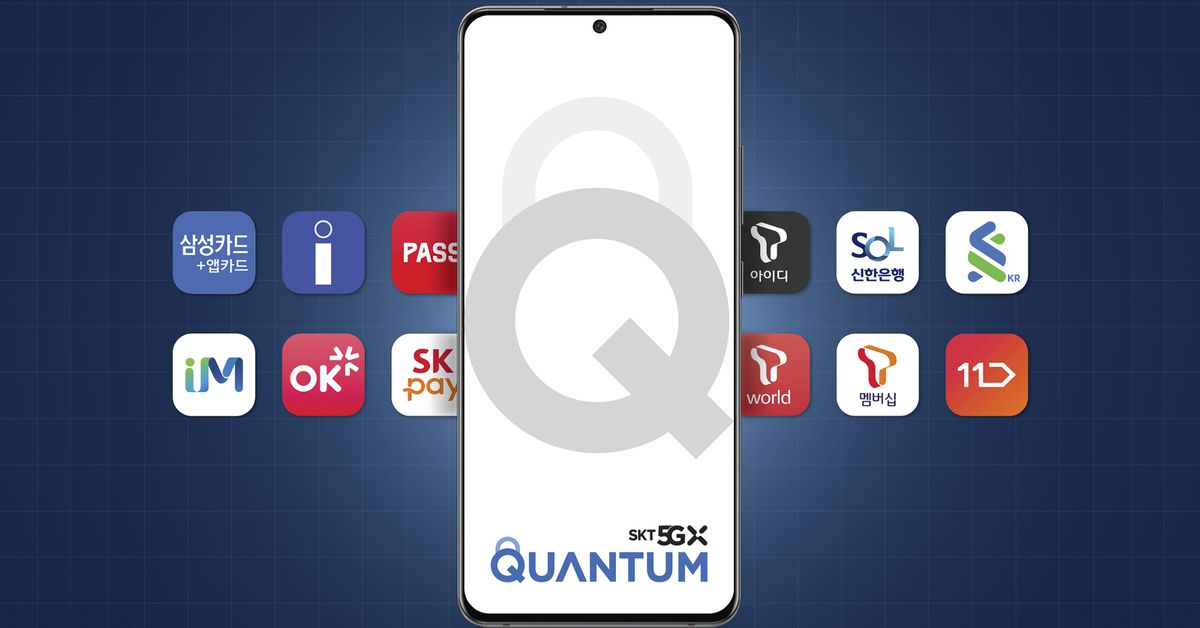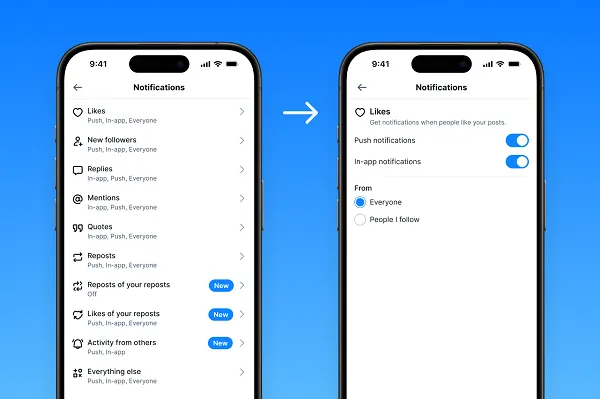Sony’s DualSense Edge is a pro controller done (mostly) right
Slightly worse battery life aside, I’m a big fan of almost everything Sony did to improve on the already-great DualSense. Continue reading…
/cdn.vox-cdn.com/uploads/chorus_asset/file/24374428/236487_Sony_DualSense_Edge_AKrales_0016.jpg)
Sony’s DualSense Edge is like a director’s cut of a movie that improves on the original vision but costs 185 percent more to watch. Enjoyment is always hard to quantify, but this $199.99 controller (almost the cost of three DualSense gamepads) is stuffed with features that might be worth that extra cost to you, or not.
This may help you figure it out: have you ever, during the PS5’s going on three years of existence, wished for a controller with back paddles, swappable analog stick modules that require no tools to switch, and function keys that let you swap controls and adjust volume without popping in and out of annoying menus? If that’s your bar for saying yes, the DualSense Edge will likely satisfy you since it can do even more than that. There currently isn’t a PS5 controller that matches it, though the $219.99 Scuf Reflex Pro comes closest.
Many of the DualSense Edge’s additions that I’ll get into below are impressive, but there’s one area where you’ll actually get worse performance for your money: battery life. My colleague Sean broke the story on the DualSense Edge’s battery life taking a hit compared to the standard model, for which Sony even provided a clarifying statement:
“The DualSense Edge wireless controller’s operating time is moderately shorter than the original DualSense wireless controller because we’ve included many more features within the same form factor and ergonomic design as the original DualSense controller. We wanted to strike a good balance between wireless operating time and delivering robust, high-performance features.”
What does “moderately shorter” look like in real-world testing? Not as bad as I feared, but still not great for a $200 controller. It’s not so short that I’ve been able to easily drain it several times during the review period. After switching between a mix of PS4 and PS5 games with vibration and adaptive trigger settings at maximum intensity (and taking advantage of every feature I could), I got about eight hours and change of battery life before it disconnected, which is just a couple hours fewer than I usually get with my DualSense controller from the PS5’s launch. I asked Sony how long the battery should last if you choose not to use any of its new features, and I’ll update this review once I hear back.
This controller closely mimics what Microsoft’s $179.99 Elite Wireless Controller Series 2 includes and is capable of, with some variations. Starting with the hardware, the DualSense Edge comes in a hard case that lets you route its 2.8-meter braided USB-C cable through its back so you can keep it charged and protected. Inside, there are a total of four back paddles (two sets of different lengths and designs) and four extra analog stick toppers (two short convex heads and two tall convex heads).
If you choose to play wired versus wirelessly, Sony includes a unique locking mechanism for keeping the cable physically latched to the controller, so it can’t be yanked out during a crucial match. The case has room for a spare analog stick module in case you’re concerned that drift may become an issue down the line for the two modules pre-installed on the controller. (A likely possibility.) These are $20 per module to replace.
There’s a QR code printed on the inside of the case, which takes you to an online instruction manual. I’ve asked Sony if it plans to sell DualSense Edge accessories through this QR code as well as if other components can be purchased separately but it didn’t respond before publication.
All of the accessories that are included with the DualSense Edge.
As someone who still enjoys using the original DualSense, I was curious (and plenty dubious) how the $200 Edge might improve on it. Like my colleague Sean Hollister said in his hands-on, it looks and feels almost exactly the same. It weighs 46 grams more, actually, but the Edge is so well-balanced I couldn’t feel any weight difference at all until I compared the two on a scale. Sony added some grip to the rear part of the grips and to the rear triggers, which are nice touches that I expect at this price. Compared to the standard DualSense, the Edge has black face buttons (which feel exactly the same to press but are more lovely to look at), and its faceplate is glossy instead of matte-textured. Also, the Edge’s touchpad is covered in Sony’s tiny little face button symbols, not just the grips.
A pop-up greets you the first time you connect the DualSense Edge to a PS5, and subsequent menus chauffeur you through its myriad features. It’s a little overwhelming at first, but the best way to get comfortable is to just start experimenting with the tools and new buttons. The first buttons that I noticed, which eventually became my favorite addition, are the two function keys located beneath each analog stick.
Here are the function (Fn) buttons, located just under the analog sticks. They might seem annoyingly placed, but I got used to them quickly.
You’ll get a lot of use out of them if you want to make custom control schemes for your games. The controller can access up to four control layers with remapped buttons and analog stick deadzones and sensitivity levels. You can name each preset and assign it to a face button (cross, square, circle, or triangle). Crucially, you can flip between them without having to leave your game. An OS-level notification pops up to let you know what layer you’ve switched to, and the controller gives a jolt of haptic feedback, though you can customize the level of feedback you want. For when you eventually move onto new games, overwriting and renaming schemes is simple, too.
The Fn + options button combo is a lifesaver since it launches right into the control scheme customization window, letting you easily remap controls within a scheme if something isn’t to your liking. Pressing that combo again quickly takes you back to your game. What’s even better is that the function keys can control audio without menu surfing. Just hold one and press up or down on the directional pad to adjust volume, or press left to right to tweak game / chat audio balance. However, this only seemed to work with wired 3.5mm headphones, not the wireless options that I tried out. (This includes even Sony’s Pulse 3D headset.) I’ve asked Sony if this feature can operate with any wireless headsets, or if it’s wired-only feature.
1/5
When you change the profile, a notification will pop up on the screen.
I’ve never gotten accustomed to back paddles on controllers (I typically avoid using them even on my Steam Deck), though I like Sony’s approach here, partly because there’s no right or wrong way to attach them. For instance, you can put the bumpers made for the left side on the right side, or use a combination of the longer lever paddles and half-dome paddles, or use just one of them. That freedom of customization is nice to have. In terms of execution, they’re simple to install, fitting into a slot and fastening via magnets. They’re satisfyingly clicky yet quiet.
I might actually stick with these back paddles because — and I’m curious if I’m alone in thinking this — the controls in Sony’s first-party games (Ghost of Tsushima and God of War Ragnorök come to mind) have some of the toughest to learn patterns in recent memory. That’s partly because some buttons have secondary functions when pressed with other inputs, including those that are hard to reach in the heat of battle. Your mileage may vary, but these paddles made a noticeable difference to me in God of War specifically, where, for example, I could parry with the right paddle instead of L1, then use the left paddle to start aiming Kratos’ Leviathan ax instead of holding down a trigger. They come in handy if you prefer driving with manual transmission in Gran Turismo 7, making them feel a bit like clutch paddles in a car… if you use your imagination a bit.
Installing the stick heads requires just a bit of force.
The replaceable analog stick heads were more fun to use than I expected. This is far from the first controller to offer this feature, but I quickly fell in love with these particular domed caps because they look and feel exactly as I remember the DualShock 2 feeling but better since they come in multiple heights here. Those come off with a tug. Within the PS5 operating system, you can tweak their sensitivity and deadzone and save these settings to a custom control scheme.
That these analog sticks can be removed entirely is one of the DualSense Edge’s biggest selling points. Accessing them requires you to slide the “Release” slider on the controller’s back (which is impossible to do on accident and sometimes tricky to do with intention), popping off its glossy black faceplate. To release each stick module, a heavy-duty lever must be lifted. In case you’re curious, it won’t let you play games with just one stick installed — I tried!
From a repairability standpoint, it’s wonderful that this $200 controller doesn’t need to go back to Sony for a simple analog stick fix. However, its solution isn’t totally bulletproof. We confirmed that these use the same potentiometer sticks as the regular DualSense, though Sony’s $20 price per module isn’t terrible. It’ll start selling those on January 26th at its online store and through other retailers in late February.
1/6
The DualSense Edge (right) next to the standard DualSense that comes with every PS5 console.
I’m cautiously optimistic about the modular design’s future, however, for one reason. Sony could decide to make analog stick modules with hall effect sensors, which wouldn’t have the same risk of drifting. These are already used in some modern controllers like 8BitDo’s Ultimate Bluetooth model and the GuliKit KingKong 2 as well as older ones like the trusty Dreamcast controller. GuliKit also makes Joy-Con-ready joystick replacements, which I can’t wait to try out. The main reason why they last longer and don’t exhibit the same issues is that they don’t physically rub on a sensor like the potentiometer sticks used in most controllers. Instead, they rely on magnets that can alter electrical current as you move them. (This iFixit video sums up the specifics nicely.) In this way, sticks with hall effect sensors are more accurate, and they don’t inherently get worse over time. The company declined to comment when my colleague Sean asked Sony if it considered using them. But come on. Let’s do this, Sony.
Of course, the DualSense Edge wouldn’t be a modern pro controller without adjustable stops on its rear triggers to tweak how far they can be pressed, and thankfully, it has those. Each trigger has a switch that offers three steps of travel: full travel, half travel, and very minimal travel. Which one is right for you basically comes down to preference and how quickly you want to be able to execute something in a game. For first-person shooters, the hair trigger setting will give you a faster response time because, well, the trigger doesn’t have to move as far. There are plenty of games where you may still want the full trigger pull based on feel — and if you want the adaptive trigger functionality to remain. (It switches off when you shorten the pull of the triggers.)
The touchpad has Sony’s face button symbols all over.
After spending as much time as I could with the DualSense Edge’s main features, there were a few interesting takeaways:
Earlier, I compared the DualSense Edge to the Xbox Elite Series 2. While both include a similarly comprehensive set of accessories, it’s not a one-to-one showdown when it comes to features (besides that they’re made for two different gaming platforms). The Elite Series 2 wins with its thumbsticks that have adjustable tension, swappable directional pads, and much longer 40-hour battery life, but it’s otherwise a close match. In the realm of PS5 controllers, the Scuf Reflex Pro has the hallmark DualSense features (haptics, adaptive triggers) and features four removable back paddles. However, it costs more and has fewer customization options and a shorter half-year warranty.
It’s a handsome controller, and those all-black buttons are tempting, but don’t get this unless you are ready to pay handsomely for customizable features.
Due to its customizable nature, this controller might appeal to people who are searching for a more accessible option. While the standard DualSense allows for close to a full remapping of controls, the Edge’s swappable stick height, tweakable triggers, and function shortcuts might help some more people who have disabilities. If you need a more accessible controller, you may want to hold off and see if Sony’s Project Leonardo accessibility controller lives up to the hype. It was announced at CES 2023 in January, and it’s built specifically to support more ways to play, including industry standard 3.5mm inputs for physical switches. We still don’t know the price for that one.
It’s great that Sony is finally expanding its first-party lineup to help more gamers play their own way. The company has come a long way since its Back Button Attachment launched for the PS4’s DualShock 4 controller, which afforded you two customizable back paddles. Buying a DualSense Edge isn’t a must for people who are satisfied with what the standard controller offers, and I do wish that the Edge had longer battery life.
To that end, the DualSense (for now) is the better option if you play games on PC. The Edge is recognized as a PS5 controller on Steam, but you presently can’t switch profiles or take advantage of the back paddles (I’ve asked Sony when it plans to add full PC support for its customization features, if ever). Still, if you want a pro-grade controller for your PS5 and don’t mind taking a slight hit in the battery department, you’ll probably be happy owning the DualSense Edge.

 Konoly
Konoly 






























